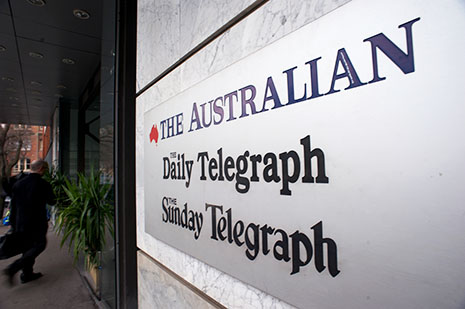BOB BROWN’s call for an inquiry into the media has attracted hostility, and not only in News Limited newspapers. Typical of the critics was the Financial Review’s Neil Shoebridge, who described the proposal as self-serving, predictable, naive and half-baked, though he did concede that Brown was “half-right” in saying that Australian media ownership is highly concentrated.
The wrong half of Brown’s argument, according to Shoebridge, is the fact that it ignores the internet, which “has increased – and will continue to increase – the number of media voices.” But it’s hard to find much evidence that a proliferation of online voices will translate into the kinds of institutions that can provide the resources and culture necessary for producing high-quality journalism. The only online news organisation that has achieved any kind of critical mass in Australia is the group made up of Crikey, Smart Company and Business Spectator, which are doing some very good work with very limited resources but could be vulnerable if a well-resourced overseas publisher moved into the Australian market.
Bob Brown is right to be concerned about News Limited’s grip on the Australian newspaper industry. And because print, broadcast and online media make up a complex ecosystem, and because newspapers, on and off-line, are still the best-resourced news outlets, News Limited’s disproportionate influence in print has also permeated radio and television. Listen any morning to talk radio and a significant portion of what you hear will have originated in the morning’s papers, around 70 per cent of which belong to Rupert Murdoch.
But devising a way of reducing News Limited’s control and influence isn’t straightforward. The company won’t willingly relinquish its most profitable outlets, so the most likely result of any legislative attack would be for some or all of its papers (rather than its pay TV interests) to be put up for sale. The best of the News Limited papers, the Australian, undoubtedly loses money, so it wouldn’t be an attractive option for potential owners. The company’s tabloid papers rely increasingly on content-sharing arrangements, so buying one or a few is unlikely to make sense. The whole tabloid group might just work for a new owner with plenty of money, but it’s hard to imagine who would take them on in the present publishing environment – except someone who wants to get hold of some of the political influence Murdoch is presumed to have had.
It makes more sense for an inquiry to treat the concentration problem as a shortage of alternatives to News Limited – a shortage that not only limits the perspectives from which the world is reported but also limits the size of the audience for news gathered by Australian journalists – and focus on how to increase the number of news publishers.
Although print circulation figures are declining in importance as a measure of overall news consumption, they do help put Australia’s circumstances in perspective, and might provide some clues about what we need to do next. No equivalent figures are available for online news. The most dramatic fall in overall newspaper sales in Australia occurred between 1990 and 2000, before the internet became a major source of news, when sales per head of population almost halved. The cause was a sharp reduction in the number of newspapers available to readers. Papers like the Melbourne Herald, the Sydney Daily Mirror and the Adelaide News closed down, and that loss of diversity meant a loss of sales. (Conversely, when a new newspaper did start up – in Adelaide on Sundays in 2004 – overall sales rose.)
This means that when the World Association of Newspapers measures the average number of newspapers sold each day in Western countries, Australia’s figure – currently 112 copies per thousand adults – puts us well down the list. At the top is Japan, with a remarkable 526 per thousand, and next is Norway, where 458 newspapers are sold for every thousand adults.
The healthy Norwegian figure partly reflects longstanding government programs designed to maintain and expand the newspaper industry and encourage diversity. Norway’s Media Authority provides subsidies to encourage local newspapers that compete with large, well-established papers. According to the American journalist John Nichols, Norway’s assistance program “promotes the development of newspapers in sparsely populated regions and helps sustain publications that may have an ideological following but are not necessarily popular with advertisers.”
Direct subsidies might not be a politically feasible option in Australia (though they were introduced by a centre-right government in Norway), but initiatives being developed in other countries, including the United States, could provide useful evidence for a media inquiry focused on coming up with ideas for expanding diversity. In their recent book, The Death and Life of American Journalism, Nichols and Robert McChesney discuss a series of American and other international initiatives that could help sustain quality journalism, including tax breaks for print and online subscriptions and philanthropic funding for news publishers.
They also discuss the intriguing option of low-profit limited liability companies, or L3Cs, which have some of the tax relief and other benefits normally available to non-profit entities but can distribute modest profits to investors. L3Cs are already an option in several American states, and it’s been proposed that Australian governments look at adopting them here. The Productivity Commission briefly examined the idea in its recent inquiry into non-profit organisations and didn’t reject it out of hand. At some point a Melbourne-owned Age, for instance, or an online news service like Crikey, might work best as an L3C.
An inquiry that looks at how initiatives like these could dilute the legacy of the Murdoch-friendly policies of previous governments has the potential to attract broader support and generate a real debate about the future of the news media. •




